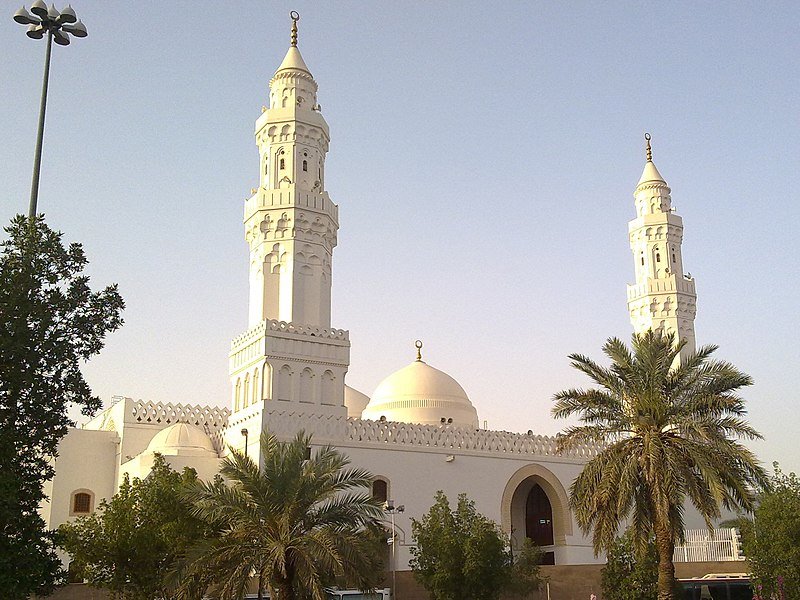Historical Significance:
Change of Qibla:
The mosque is famous for being the site where the Qibla (the direction of prayer) was changed from
Jerusalem to the Kaaba in Mecca. This event took place in 624 CE, around 16-17 months after the
migration (Hijrah) of the Prophet Muhammad (peace be upon him) to Medina.
While the Prophet was leading the prayer, he received a revelation directing him to change the Qibla,
and he turned toward the Kaaba. This pivotal moment is significant in Islamic history.
Name:
The name "Qiblatain" literally means "two Qiblas," referring to the mosque's association with both the
earlier Qibla (Jerusalem) and the later one (Mecca).
Architectural Features :
Design :
The mosque features two prayer niches (mihrabs): one facing Jerusalem and the other facing Mecca,
symbolizing the transition in the direction of prayer.
The mosque is built in a simple architectural style, with a spacious courtyard and domed roofs,
providing a serene atmosphere for worshippers.
Renovations :
Throughout its history, Masjid al-Qiblatain has undergone several renovations and expansions, especially
during the reign of various Saudi kings, to accommodate the increasing number of visitors and
worshippers.
Importance in Islam :
Pilgrimage Site:
Masjid al-Qiblatain is an important site for Muslims, especially those visiting Medina. Many pilgrims
make it a point to visit this mosque as part of their journey during Hajj or Umrah.
Educational Role :
The mosque serves as a place for prayers, religious gatherings, and educational activities. It
emphasizes the historical significance of the event that took place there.
Visitor Information
Location :
The mosque is located about 5 kilometers northwest of Al-Masjid an-Nabawi (the Prophet's Mosque), making
it accessible for pilgrims and tourists visiting Medina.
Facilities :
The mosque is equipped with facilities to accommodate worshippers, including prayer areas for men and
women.
Conclusion :
Masjid al-Qiblatain is not only a place of worship but also a monument that signifies a crucial turning
point in Islamic history. It stands as a reminder of the evolution of the Muslim community and their
direction of prayer, fostering a sense of identity and unity among Muslims around the world.

